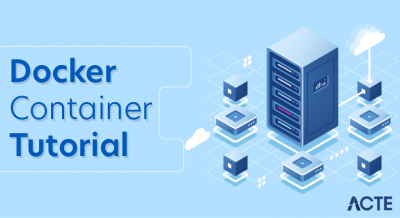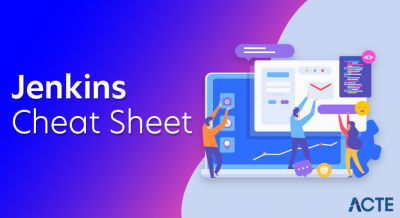
- Introduction Of Teamcity
- Licensing of Teamcity
- Features for Teamcity
- History of Teamcity
- Ease of arrangement and thorough documentation
- TeamCity for Java Projects
- Top 5 motivations to begin utilizing TeamCity
- Jenkins versus TeamCity: Key Differences
- Security Notes of Teamcity
- Credentials for Teamcity
- Permissions of Teamcity
- Build History and Logs
- Conclusion
- TeamCity is a CI server from JetBrains and accompanies a lot of elements out of the case to kick you off rapidly with CI for your activities. As a CI server, TeamCity can identify changes in form control storehouses and trigger forms at whatever point new code is checked in. TeamCity can be arranged to play out the form exercises, which incorporate the aggregation of source code, running unit tests and mix tests, sending the assembled executables into a testing climate to perform useful tests, and uncovering curios for downloads.
- TeamCity is intended to assist you with following the accepted procedures of CI. With its capacity to download antiques from one more form design, for instance, TeamCity empowers you to follow the methodology of the structure once and convey it all over the place. TeamCity is included rich and adaptable enough to permit you to follow the practices that suit your group and your necessities the best. This book will utilize TeamCity 8.0.x, however, we will likewise be taking a gander at a portion of the more current highlights of the 8.1.x delivery.
- Before we get all amped up for the astounding elements that TeamCity offers of real value, it is advantageous to investigate the permitting choices accessible. TeamCity is a business item from JetBrains, yet the authorizing choices are planned so that little groups can begin with TeamCity for nothing.
- TeamCity accompanies the Professional Server License free of charge. It permits you to run a TeamCity server, which can have up to 20 form arrangements, and utilize three form specialists. As far as I can tell, this is adequate for little tasks. Groups can undoubtedly begin their CI arrangement with TeamCity and assuming they track down a requirement for additional setups/specialists later, they can do as such at this point. Extra specialists can be purchased independently, which additionally knocks up the most extreme number of fabricating arrangements permitted by 10 each.
- For greater groups and activities, there is an Enterprise Server License. This permit empowers you to have limitless form arrangements and specialists with your TeamCity server. This likewise incorporates moves up to the most recent adaptation of TeamCity for a year.
- JetBrains likewise gives Open Source License, which is given for nothing to non-business open-source projects that qualify. This permit is comparable in elements to the Enterprise Server License referenced beforehand. You can peruse up with regards to the most recent TeamCity authorizing choices at.
- TeamCity accompanies incredible help for different innovations like Java, .NET, Ruby, Android, iOS, and considerably more.
- For instance, assuming you have a .NET task that utilizes the Powershell-based PSake system for its construct, you can utilize the Powershell sprinter to run your work off a PSake assemble script.
- The capacity to help most stages/advancements with very thoroughly examined and top-of-the-line highlights make TeamCity an important instrument to assist you with rapidly beginning with your CI arrangement.
- This top-of-the-line and broad help don’t suggest that TeamCity doesn’t have or can’t have modules. It has a considerable amount of them and for different purposes. Both JetBrains and the local area, in general, compose modules for TeamCity. Large numbers of these modules come packaged with TeamCity itself.
- A large number of these modules are extremely helpful and some of them are out and out cool. A later module adds downpour capacities to TeamCity so specialists can download ancient rarities utilizing the BitTorrent convention, when proper.
- A thorough rundown of accessible modules can be found at http://confluence.jetbrains.com/show/TW/TeamCity+Plugins.
- With clients the executive’s highlights, for example, validation and review, it turns out to be not difficult to follow who did what. A client can impart, for instance, assuming that they are chipping away at fixing broken forms. Different clients can likewise allocate individuals who are/need to explore the messed-up forms.
- TeamCity gives bunches of elements to follow authentic information of constructs. With the assistance of factual reports and charts, you can rapidly find out with regards to the different attributes of a form, for example, a form time and the number of tests.
- We can likewise set up and tweak how chronicled information is cleared up or protected through the Build History Clean-up highlights. Assembles that are advanced, to say creation, can be stuck forever. Fabricates that ran a couple of days or even a couple of months prior (called history construct) can be reproduced, if necessary.
- Every one of the elements that TeamCity offers would be to no end assuming TeamCity makes it truly challenging for you to utilize them. Fortunately, this isn’t true. Getting everything rolling with your CI arrangement is a breeze with TeamCity. The design connection point to set up ventures and fabricate setups is clear. The principle design things are featured, and further developed ones are accessible under the right degrees of settling.
- TeamCity additionally gives highlights, for example, formats, a bunch of normal settings from which fabricate arrangements can be immediately generated that make it very simple for you to set up increasingly more form setups.
- The straightforwardness and force of TeamCity can be clarified with one of my cherished highlights. Whenever you empower NuGet support in TeamCity, you can bend over TeamCity as a NuGet storehouse feed by basically distributing the NuGet bundles as antiques; straightforward and natural!
- TeamCity is additionally very much archived and has a tremendous local area of clients around it. This makes it exceptionally simple for groups beginning with TeamCity to settle on the best choices while setting up their CI.
- Likewise, with its Amazon EC2 reconciliation, TeamCity can turn up VMs on EC2 and run the forms and bring them down as and when required.
- TeamCity doesn’t order every one of the specialists to have the rendition control device designed, as the server can do the checkout and send the documents over. The server can likewise update specialists naturally.
- TeamCity has very thoroughly examined combinations with different IDEs like IntelliJ IDEA (another JetBrains item) and Visual Studio. Through the TeamCity modules for these IDEs, it is feasible to take a gander at the situation with the forms, the justification behind the disappointments, and surprisingly trigger and interruption works without leaving the solace of the IDE.
- Extra elements, for example, pre-submit and individual forms are accessible through IDE modules.
- The first arrangement of highlights just starts to expose TeamCity. TeamCity brings significantly more to the table. We will investigate these and numerous different highlights of TeamCity in the approaching parts.
- Utilizing Ant construct documents to fabricate a Java project
- Performing basic and complex Maven lifecycle exercises for our undertaking
- Beginning with building a task with Gradle
- Finding out with regards to information base relocations, and their part in CI
- Simultaneously, we will likewise be checking out other fundamental apparatuses in the Java biological system, like JUnit, Emma, JaCoCo, from there, the sky is the limit. We will likewise be investigating the rich coordination that TeamCity has with these instruments, accordingly making it clear to set up our assembles.
- TeamCity is created in light of safety concerns. We put forth sensible attempts to guarantee the framework is immune to various kinds of assaults. We work with outsiders on evaluating TeamCity security utilizing security scanners and entrance tests. Newfound security issues are speedily tended to in the closest bugfix discharges (read more with regards to our delivery cycle). It is prescribed to move up to recently delivered TeamCity variants when they become accessible.
- Nonetheless, the overall supposition and prescribed arrangement are to convey TeamCity in a confided in climate, with no opportunities for it to be gotten to by pernicious clients.
- Alongside these rules, kindly survey notes on arranging the TeamCity server for creation use. For the rundown of uncovered security-related issues, see the JetBrains Security Bulletin and the “Security” area in the delivery notes.
- We additionally prescribe that you buy into the security notice administration to get the most recent data about security gives that might influence TeamCity or some other JetBrains items.
- This part contains the principle security proposals to follow while utilizing TeamCity.
- You can likewise download an abbreviated form of this part in PDF organization to convey it among your partners.
- Storehouses, like GitHub and GitLab.
- Climate factors, as they are regularly logged or imparted to outsider checking frameworks.
- The form log – ensure you don’t arbitrarily log delicate data.
- On the off chance that you are utilizing formed settings (in Kotlin DSL or XML design), never store your accreditations in your setup documents. All things considered, use tokens.
- TeamCity clients with managerial authorizations ought to have complex passwords.
- Although secret phrase boundaries are concealed in the UI, encoded at REST, and shielded from being uncovered in the form log as plain text, this frequently doesn’t give a sufficiently high degree of safety.
- You might consider utilizing an instrument like HashiCorp Vault, which allows you to oversee and turn every one of the delicate qualifications you’ll use in a form and which coordinates well with TeamCity.
- If is relevant, arrange one of our outside verification modules, going from LDAP and Windows Domain coordination to confirming utilizing GitHub, GitLab, or others. You can then debilitate the TeamCity worked in the confirmation so TeamCity no longer keeps hashed passwords in the inner data set.
- If any of the OAuth confirmation modules (Bitbucket Cloud, GitHub.com, GitHub Enterprise, GitLab.com, GitLab CE/EE) are empowered on your server and you limit validation to individuals from a particular Bitbucket work area, GitHub association, or GitLab bunch, note the accompanying:
- Once endorsed into the TeamCity server with an outside account, a client can make a secret key or token which will permit them to sign in to this server straightforwardly, bypassing the VCS facilitating supplier confirmation. Assuming that you erase a client from a work area/association/bunch, make sure to limit their entrance or erase their client profile in TeamCity also.
- Passwords that are important to validate in outer frameworks (like VCS, issue trackers, etc) are put away in a mixed structure in the TeamCity Data Directory and can likewise be put away in the information base. Nonetheless, the qualities are just mixed, and that implies they can be recovered by a client who approaches the server record framework or data set.
- Rather than this default scrambling methodology, consider empowering a custom encryption key. For this situation, TeamCity will utilize your novel custom key to encode generally secure qualities, rather than utilizing the default scrambling component.
- Framework Administrator
- Project Administrator
- Project Developer
- Project Viewer
- Can do everything the framework client, under whom the TeamCity specialist is running, can do; approach OS assets and different applications introduced on the specialist machines where their assembles can run.
- Can access and change the source code of different ventures based on a similar specialist, adjust the TeamCity specialist code, distribute any records as ancient rarities for the forms run on the specialist (and that implies the documents can be then shown in the TeamCity web UI and uncover web weaknesses or can be utilized in different forms, etc.
- Can imitate a TeamCity specialist (run another specialist appearing to be identical to the TeamCity server). Can do all that clients with the “View construct setup settings” consent for every one of the tasks on the server can do (see beneath). can recover settings of the form setups where the forms are run, including the upsides of the secret word fields. Can download curios from any expand on the server.
- Clients with the “View assemble setup settings” authorization (naturally, the Project Developer job) can see every one of the activities on the server. To limit this, you can utilize the TeamCity.buildeth.enableStrictMode=trueinternal property.
- Clients with the “Alter Project” authorization (the “Undertaking Administrator” TeamCity job as a matter of course) in one task, by changing settings can recover curios and trigger forms from any form arrangement they have just the view consent for (TW-39209).
- Clients with the “Change server settings” consent (the “Framework Administrator” TeamCity job of course): It is accepted that the clients additionally approach the PC on which the TeamCity server is running under the client account used to run the server cycle. Along these lines, the clients can get full admittance to the machine under that OS client account: peruse the record framework, change documents, run self-assertive orders, etc.
- The TeamCity server PC heads have full admittance to TeamCity put away information and can influence TeamCity executed cycles. Passwords that are important to verify in outside frameworks (like VCS, issue trackers, etc) are put away in a mixed structure in TeamCity Data Directory and can likewise be put away in the data set. In any case, the qualities are just mixed, and that implies they can be recovered by any client who approaches the server document framework or information base.
- Clients who have perused admittance to the TeamCity server logs (TeamCity server home index) can raise their admittance to the TeamCity server executive. Clients who have perused admittance to <'TeamCity Data Directory> can get to every one of the settings on the server, including designed passwords.
- Clients who have perused admittance to the form relics in <'TeamCity Data Directory>/framework/ancient rarities get similar authorizations as clients with the “View assemble runtime boundaries and information” consent (specifically, with admittance to the upsides of all the secret key boundaries utilized in the form). TeamCity specialist PC heads same as “clients who can change code that is utilized in the forms run by TeamCity”.
- Any client who can get to the settings’ vault (counting clients with “View document content” consent for the form arrangements utilizing a similar VCS root) can see the settings and recover the real passwords in light of their put away mixed structure.
- Any client who can alter settings in VCS for a solitary form design based on the server, through changing settings can recover curios and trigger forms from any form setup they have just the view consent for.
- Clients who can modify assemble setup settings on a for every form reason (for instance, one who can run individual forms when formed settings are set to “use settings from VCS”) utilizing changing settings in a form can recover ancient rarities and trigger forms from any form arrangement they have just view consent for.
- We unequivocally prescribe that you consistently update TeamCity to the most recent delivered adaptation.
- TeamCity will consequently inform you utilizing the UI once another update is accessible. You can likewise physically check for new TeamCity renditions under Server Administration | Updates for TeamCity itself and under Server Administration | Plugins for any suitable module refreshes.
- According to a specialized point of view, updates between bugfix discharges inside a similar major/minor form are in reverse viable (for instance, 2021.1.1 → 2021.1.2) and support generally straightforward rollbacks. For any remaining significant redesigns, we give a valiant effort to guarantee that they run as flawlessly as could be expected, however, reinforcements are firmly suggested for simple rollbacks.
- According to a permitting viewpoint, overhauls between bugfix discharges are additionally protected. On the off chance that your permit covers 2021.2, you will want to move up to any 2021.2.x adaptation.
- Clients who have perused admittance to the TeamCity Data Directory can get to every one of the settings on the server, including arranged passwords. Consequently, you want to ensure this registry is just clear to OS clients who are executives of the administrations.
- The TeamCity Windows installer adjusts authorizations of the TeamCity establishment catalog not to utilize inheritable consents and unequivocally gives admittance to the index to the Administrators client bunch and the record under which the assistance is arranged to run. It is unequivocally prescribed that you limit authorizations to the TeamCity Data Directory similarly.
- Limit admittance to the machine your TeamCity server runs on. Empower access logs and routinely survey them.
- As a general rule, don’t utilize the TeamCity server machine for running form specialists (basically under the client allowed to peruse the <'TeamCity Home Directory> and <'TeamCity Data Directory>).
- The TeamCity server (and specialists) processes run under clients with negligible required consent. Establishment catalogs are coherent and writable exclusively by a restricted arrangement of OS clients. The conf\buildAgent.properties record and server logs, as well as the Data Directory, are just discernible by OS clients who address heads of the administrations, since perusing those areas might permit assuming control over the specialist or server separately.
- Note that doubles of the specialist modules introduced on the server are accessible to any individual who can get to the server URL.
- Admittance to the TeamCity web point of interaction is gotten with HTTPS (for instance, with the assistance of an intermediary server like NGINX). Ensure that accepted procedures for getting web applications are utilized for the TeamCity web interface: for instance, that it is absurd to expect to get to the server utilizing the HTTP convention. The converse intermediary doesn’t strip the Referer demand header.
- To figure out how to arrange an association between a TeamCity specialist and the TeamCity server, see this segment.
- Try to utilize a committed data set client account with solid qualifications for your TeamCity server’s data set construction. Consider scrambling the data set whenever upheld.
- Consider adding the TeamCity.installation.completed=true line into the <'TeamCity Home Directory>\conf\teamcity-startup.properties record – this will forestall the server beginning with an unfilled data set from giving admittance to the machine for the primary coming client.
- Note that the forms running on a similar form specialist are not confined, and they might conceivably influence one another, which may permit performing vindictive activities.
- If conceivable, take a stab at utilizing expendable, one-off form specialists. The more limited the specialist’s lifetime, the more modest the opportunity of a trade-off. Additionally, make a point to utilize OS-subordinate firewall rules to impair approaching organization admittance to your cloud specialists.
- As a general rule, it is prescribed to convey projects among specialists, so one TeamCity specialist would not run works of a few undertakings whose designers and managers ought not to gain admittance to one another’s tasks.
- Assuming you run a few specialists on a similar machine and don’t empower clean checkout, be careful that compromised specialists or untrusted tasks might change source code in the “neighbor” working registries. To moderate this danger, consider running only one specialist for each machine and utilizing different specialist pools for various (private/public) projects.
- Ensure that the “Default” specialist pool has no specialists as a venture can be relegated to the Default pool after a specific reconfiguration (that is when there could be no other pool the task is appointed to).
- Control consents of the OS client who runs a TeamCity specialist. It is encouraged to run TeamCity specialists under an OS account with just an essential arrangement of consents.
- Assuming you are utilizing SSH keys to get to your storehouses, don’t store them on your assemble specialists. All things considered, utilize TeamCity’s SSH key administration to transfer them to the TeamCity server.
- Rather than debilitating realized hosts checks, try to keep a .ssh/known_hosts record on the server and assemble specialists for each host you are interfacing with.
- Assuming you fabricate pull demands from obscure clients or clients outside your association, know that pull solicitations could contain malevolent code that would be run on your assemble specialist.
- Either prohibit building public force demands, or utilize isolated, detached, discard specialists. TeamCity additionally offers an inherent wellbeing report, which distinguishes and reports pull demand constructs.
- Whenever you use formed settings (Kotlin DSL, XML) and those settings are set in a similar store as the source code, any noxious designer might conceivably alter and spill project setup settings. This should be possible, for instance, by adding a form step that prints out passwords or sends them someplace as a record.
- As a choice, you could utilize a different archive that main a set number of clients can focus on for your formed settings.
Introduction Of Teamcity
Licensing of Teamcity
Features for Teamcity
With the authorizing choices examined, it’s an ideal opportunity to discuss the threats that TeamCity accompanies. As recently referenced, TeamCity is included rich. This part will zero in on featuring the main elements of TeamCity, particularly concerning the general point of setting up a successful CI.
Top notch help for different innovations
Loads of plugins
REST API
TeamCity accompanies a REST API, which itself is a packaged module, that you can use to perform remote activities, for example, setting off forms, getting the situation with running forms, and downloading curios among others. Contingent upon the specific necessities of your CI arrangement, the REST API can end up being truly important.
Far reaching VCS support
As referenced in the segment where CI was presented, a variant control framework (VCS) has a significant impact on CI. CI servers should uphold a wide scope of VCSes and should give adaptable setups that take special care of the group’s requirements.
History of Teamcity
One more significant CI practice that TeamCity empowers focuses on the permeability and following of what’s going on and what has occurred. TeamCity gives a pleasant dashboard perspective on the tasks and the form setups in which assembles are running, fizzling, etc. The accompanying screen capture of a TeamCity demo server gives a decent perspective on the commonplace territory of TeamCity’s outline page:
Ease of arrangement and thorough documentation
Assemble pipeline/chains
As referenced beforehand, building pipelines are the best method for setting up CI (and CD) for your activities. TeamCity has underlying help for such pipelining/binding of assembling setups.
Utilizing the Snapshot reliance include in TeamCity, we can undoubtedly design-construct chains/fabricate pipelines. TeamCity likewise accompanies a decent representation for building chains. The accompanying screen capture shows one such form chain:
Specialists and fabricate grids
TeamCity accompanies every one of the fancy odds and ends to deal with a form homestead or matrix of specialists. TeamCity makes it a breeze to oversee tens, hundreds, or significantly more specialists that might exist in the form lattice. TeamCity can give responsibility insights, disperse load across specialists, empower you to run expands on every one of the specialists or just explicit specialists, from there, the sky is the limit. The accompanying screen capture shows the Load Statistics Matrix of a demo TeamCity server:
IDE integrations
What you’ll learn
Creating programming includes many cycles to get code from improvement into a creative climate. TeamCity assists you with mechanizing each progression of this cycle. In this course, Getting Started with TeamCity, you’ll figure out how to set up application works to order, test, and bundle your applications. To start with, you’ll perceive how to start this interaction each time somebody checks in code and get warnings when something comes up short. Then, you’ll investigate how to get undeniable level announcing about disappointments. At long last, you’ll figure out how to make formats for reusable form cycles and how to quickly robotize a whole conveyance pipeline. When you’re finished with this course, you’ll have all that you want to mechanize taking your product from advancement through to creation with TeamCity.
TeamCity for Java Projects
In this part, we will be taking a gander at the particular highlights that TeamCity gives to set up CI to Java projects. We will cover the accompanying subjects with regards to how they can be carried out utilizing TeamCity:
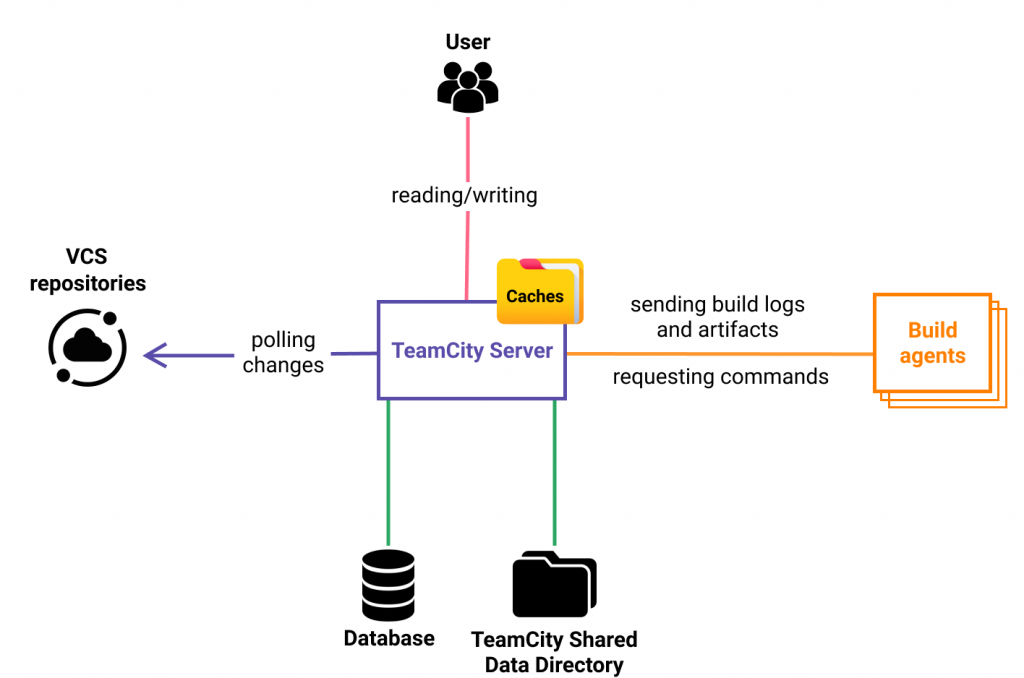
Top 5 motivations to begin utilizing TeamCity
Perform better
Similarly, as your IDE gives you additional coding powers, TeamCity does likewise for a persistent mix. It coordinates with your structure and testing apparatuses, imagines your DevOps pipelines exhaustively, and assists you with being more useful – right from the very first moment.
Begin easily
It’s truly simple, to begin with, TeamCity. Setting up your first pipeline takes under 2 minutes and should be possible through a straightforward UI without composing any code.
Test intelligence
TeamCity comprehends your tests like no other CI arrangement. It coordinates with your construct and test devices, keeps a background marked by your tests, banners temperamental tests as flaky, and can even assist you with recognizing the specific submits that cause disappointment ready to go.
Ongoing reporting
Try not to trust that a form will complete finding that something is off-base. Everything is accounted for on the fly, so you can delve into an issue, resolve it, allocate it to your undertaking individuals, or even open it straightforwardly in an IDE right at the issue line of code.
Remote run and pre-tried commit
By coordinating TeamCity with your IDE, you can construct, check, and run robotized tests without making any branches or submitting any code – and keep your code base clean consistently.
Benfits of Teamcity
Innovation Awareness
One explanation TeamCity is named a “Keen CI server” is its way to deal with the mix. Whenever we say we support an apparatus, we mean it inside and out. For instance, support for Visual Studio projects gives the programmed location of hardware forms, testing structures support, code inclusion, static code investigation, and then some. Also, the best thing is, you get this help without introducing any modules and without any alterations to assemble scripts!
Key Integrations
It’s difficult to envision an incredible CI and CD server without a mix for certain key apparatuses like your form control, your issue tracker, your construct instrument, and your bundle archive. TeamCity views it exceptionally in a serious way to offer full help for these key incorporations.
Cloud Integrations
TeamCity exploits distributed computing by powerfully scaling out its assemble specialists ranch on Amazon EC2, Microsoft Azure, VMware vSphere, or in your Kubernetes group.
Persistent Integration
Do you seriously treat ceaseless combinations? Would you like to have a steady trunk and green forms? Assuming this is the case, TeamCity will give various elements to help you as far as possible.
Configuration
Talented programming designers attempt to stay away from code duplication; comparatively, construct engineers keep away from duplication of settings. TeamCity gets this and gives multiple ways of reusing settings.
Fabricate History
We trust that keeping a past filled with fabricates, changes, and disappointments is critical to the accomplishment of any product improvement process. TeamCity empowers you to run history fabricates, see insights, and test history reports, as well as pin, tag, and add works to top choices. Every one of the progressions is amassed in the changelog.
Fabricate Infrastructure
Envision a transport line of changes from designers and a lot of analyzers taking the changes, checking them, and supplementing these progressions with confirmation results. TeamCity is such a transport, then again, actually analyzers are supplanted with Build Agents.
Code Quality Tracking
Assisting you with accomplishing better code quality on your task is a definitive motivation behind TeamCity. That is the reason it comes packaged with popular IntelliJ IDEA and ReSharper code investigation and reviews for Java and .NET code. Significant inclusion motors are additionally packaged and upheld out of the container. You can even involve code quality as a form of disappointment condition.
VCS Interoperability
TeamCity variant controls frameworks mix is exhaustive. It’s difficult to envision an undertaking whose source code couldn’t be recovered by TeamCity.
Extensibility and Customization
TeamCity furnishes you with numerous methods of collaboration, customization, and broadening your server. Use administration messages in your fabricate scripts, connect through REST API, or make modules for TeamCity utilizing Open API.
Framework Maintenance
TeamCity assists you with keeping a solid, stable CI waiter in any event, when no forms are running. It furnishes you with helpful reports like Disk Usage, Builds Time, and Server Health reports, you can likewise run construct history clean-ups behind the scenes. Beginning with 2019.2, TeamCity additionally uncovered its measurements utilizing an HTTP endpoint, in the Prometheus design.
Client Management
We comprehend that a CI server is a pre-owned thing by an entire group or even an entire organization, that is the reason TeamCity gives an adaptable client the board, including appointing client jobs, arranging clients into gatherings, various methods of client verification, and a log with all client activities for the straightforwardness of every type of effort on the waiter.
Jenkins versus TeamCity: Key Differences
Open-Source versus Commercial
The most essential contrast between Jenkins and TeamCity is that Jenkins is an open-source constant coordination instrument and TeamCity is a business device. This implies that the Jenkins project is upheld by designers across the globe while TeamCity is kept up with by its parent organization, JetBrains.
Restrictive Features
Although Jenkins doesn’t have a lot of inherent highlights, its enormous module environment gives huge loads of elements that other CI instruments can’t rival. These modules furnish Jenkins with the capacity to make works as well as investigate the code to work on its quality. TeamCity, then again, offers some out-of-the-case includes separated from ordinary CI instrument highlights. It offers help for various stages, for example, .NET, Ruby, Java, and so forth Moreover, TeamCity permits you to effortlessly fabricate docker pictures, and the help of Jira and Bugzilla serves to effectively follow issues. At last, it stores assemble changes and disappointment history to monitor the measurements of the past, run past forms, and test history reports.
Establishment
You want to have Java and Tomcat set up to introduce Jenkins. On the off chance that both are there, the arrangement of Jenkins is clear. After establishment, you can design Jenkins through the web interface it gives. TeamCity establishment is likewise simple: you simply need to download the TeamCity server and adhere to the directions in their documentation.
Interface
Jenkins’ point of interaction is old school, meaning it’s not exceptionally appealing to see (how about we simply say it’s not the prettiest person on the square). At the point when you think about Jenkins versus TeamCity as far as UI, the thing that matters is really obvious. TeamCity has a lovely point of interaction (that draws in a ton of novices). It additionally gives choices to stick, tag, and remark on forms for hierarchical purposes.
Reconciliations
Whenever we talk about joining, nothing beats Jenkins. One reason Jenkins is so broadly well known is that it coordinates with many free modules. Contrasted with Jenkins, TeamCity coordinates with few modules (300+ modules), however, it offers not many restrictive incorporations, which amount to its “out of the crate highlights, for example, mix with Docker to make holder constructs, reconciliation with Jira and Bugzilla for issue following, backing of .NET structure and cloud combination with AWS/Azure/GCP/VMware.
Dispersed Execution
Dispersed Execution is tied in with disseminating assignments across different machines. You can deal with the forms in a disseminated manner in both Jenkins and TeamCity. Incredibuild incorporates with both Jenkins and TeamCity to give appropriate handling innovation, which speeds up the whole form process, from aggregation to testing, bundling, etc. TeamCity’s hubs scale to many centers, on-request, regardless of whether by utilizing on-premise inactive CPUs you currently own or via consistently provisioning extra cloud centers. Incredibly basically scales every one of your construct hubs to a super-PC hub with many centers. With this immense number of on-request centers, construct hubs will accumulate tests, and run other form steps a lot quicker.
Security Notes of Teamcity
Suggested Security Practices
Credentials for Teamcity
Utilize solid accreditations, and use them cautiously.
We suggest utilizing solid accreditations for your TeamCity server as well as for any remaining administrations that are engaged with a form or that your product expects underway.
Ensure to keep your accreditations out of:
Store secure information utilizing boundaries with the “secret key” type:
To store passwords or other secure information in the TeamCity settings, you are unequivocally encouraged to utilize the sort boundaries. This won’t ensure that touchy qualities ever show up in the web UI and are concealed with bullets in the form log. Ensure passwords are put away as boundaries with the secret phrase type.
Utilize a mysterious administration device.
Utilize outer validation.
Utilize a custom encryption key.
Utilize scrambled SSH keys.
At the point when you transfer private SSH keys to your TeamCity server, note that they will be put away on plate in plain text, with practically no extra encryption. It is emphatically prescribed to utilize just SSH keys that are now scrambled with a passphrase.
Permissions of Teamcity
Use predefined jobs.
Out of the crate, TeamCity offers a few predefined jobs:
You can make client bunches that match your hierarchical design and allocate the above jobs to those gatherings. Then, at that point, add your clients to the particular gatherings, conceding them the most minimal degree of honors they need for their everyday work. It is likewise firmly suggested that you make new jobs with extra authorizations, rather than promptly appointing the Project Administrator job to any individual who needs somewhat more honors. (This doesn’t work if you incapacitate per-project authorizations.)
Use per-project approval.
To fix security, significantly more, you can likewise utilize per-project approval. Thusly, your designers could, for instance, approach just the arrangement of some portion of your to fabricate chain, while DevOps could access and run the sending part.
Try not to empower Guest Login.
Of course, signing into TeamCity secretly is debilitated. Make a point not to empower it on the creation TeamCity server occurrences that are presented to the web, except if you need outer clients to have the option to see every one of your assembles and the related log records/curios. Whenever empowered, client jobs ought to be painstakingly looked into for visitors and the All Users bunch.
Make a different client for REST demands.
Assuming you access the TeamCity REST API from an outer content or program, we suggest that you make a different client with a set number of authorizations for it. It would likewise be savvy to make auto-lapsing access tokens, rather than utilizing the username/passwords to get to the API.
Confine sending construct authorizations.
Ensure that your sending fabricate chains don’t permit individual forms. Limit the number of engineers who can set off those forms, and utilize a different pool of clean specialists for those forms.
Note the accompanying subtleties:
Clients who can change the code that is utilized in the forms run by TeamCity (remembering committers for any branches/pull demands assuming they are based on TeamCity):
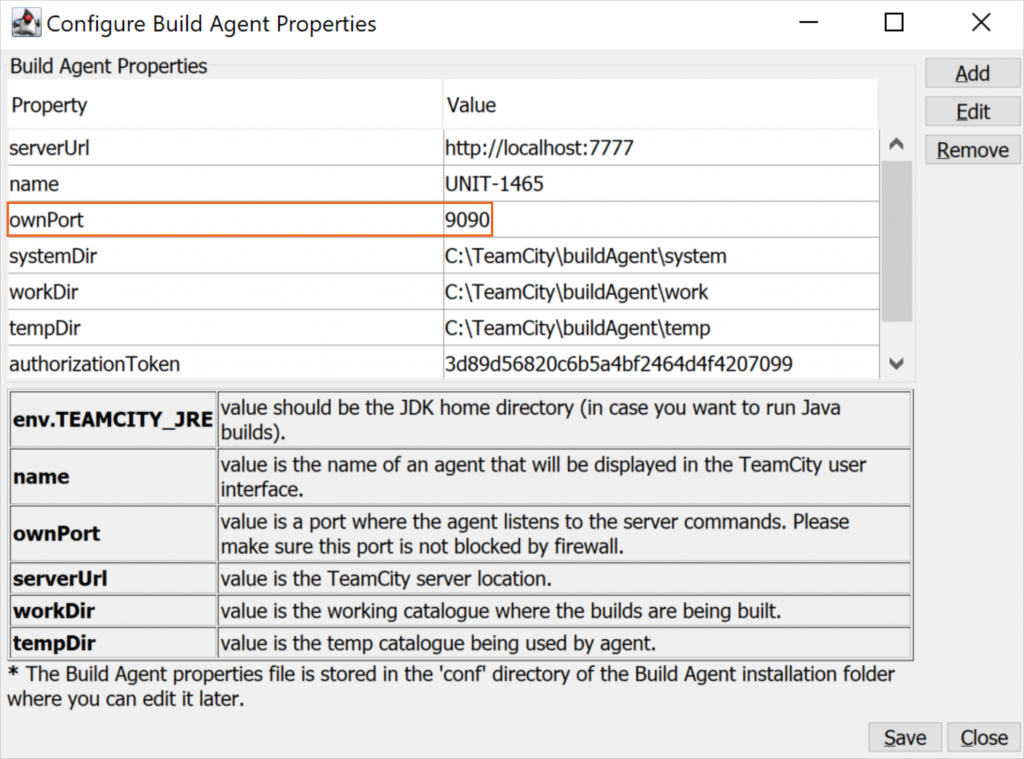
When putting away settings in VCS is enabled:
Server and Data
Update your TeamCity server routinely.
Safeguard the TeamCity Data Directory.
Safeguard your server machine.
Use HTTPS all over the place.
Safeguard against DoS.
TeamCity has no underlying insurance against DoS (Denial-of-administration) assaults: a high pace of solicitations can over-burden the server and make it non-responsive. Assuming your TeamCity example is sent in the climate which permits such assistance misuse, carry out the insurance on the converse intermediary level.
Secure your information base.
Secure form documents.
The TeamCity advancement group puts forth a sensible attempt to fix any huge weaknesses (like cross-site prearranging potential outcomes) whenever they are uncovered. Kindly note that any client who can influence construct documents (“clients who can change code that is utilized in the forms run by TeamCity” or “TeamCity specialist PC overseers”) can make a vindictive record accessible as from antiquity that will then, at that point, exploit cross-site prearranging weakness.
Build Agents
Run clean creation fabricates.
We suggest authorizing clean checkout for your creative works to forestall messing with the source code on a specialist.
Utilize expendable, network-safeguarded fabricate specialists.
Use specialist pools for various activities.
Associate specialists just to a confided in server.
TeamCity specialist is completely constrained by the TeamCity server: since TeamCity specialists support programmed refreshes downloaded from the server, specialists ought to just interface with a confided in server. Note that an overseer of the server PC can compel the execution of self-assertive code on an associated specialist.
Version Control
Utilize a new form of Git.
Try to continuously utilize the most recent stable Operating System and Git adaptation on your fabricate specialists. Update routinely.
Appropriately deal with your SSH keys.
Utilize a devoted VCS client.
On the off chance that you are not utilizing progressed highlights like Kotlin DSL or, as a general rule, on the off chance that you don’t have to focus on your vault as a feature of your assemble cycle, we suggest keeping a devoted VCS client without composing consents to associate with your stores.M
Artifact Storage
Cripple mysterious access.
Despite where you store your constructed ancient rarities (like S3), try to debilitate unknown admittance to your capacity area.
Utilize appropriate access arrangements.
Utilize legitimate access arrangements to safeguard your S3 or other stockpiling areas/stores for curios. Likewise, use encryption if conceivable. Check, screen, and routinely survey the entrance logs of your stockpiling areas.
Try not to place delicate information into antiques.
Try not to store qualifications or other delicate data as plain text in your fabricates’ antiquities.
Build History and Logs
Keep your construct history.
Save your fabricated history and logs for a more extended period, particularly for assembles doing basic arrangements, by determining comparing tidy-up rules for your undertaking. Additionally, try to not concede the “eliminate fabricate” authorizations to engineers, as this could forestall the filing. The two measures might assist with following pernicious exercises, regardless of whether they happened quite a while in the past.
File server and specialist logs.
Gather the TeamCity server and fabricate specialist signs in a document and put them under an appropriately gotten capacity.
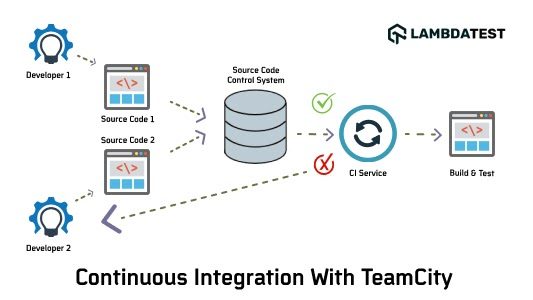
Integrations
Be cautious while building public force demands.
Know about the security suggestions while utilizing formed settings.
Be cautious with outsider modules.
While introducing modules, ensure they come from a believed source and that their source code is accessible. Modules might get to all data on a TeamCity server, including touchy data.
Encryption Used by TeamCity
TeamCity makes an effort not to pass secret key qualities through the web UI (from a program to the server) in clear text: all things being equal, it utilizes RSA with a 1024-cycle key to scramble them. Notwithstanding, it is prescribed to utilize the TeamCity web UI just through HTTPS so this precautionary measure ought not to be significant. TeamCity stores passwords in the settings (where the first secret phrase esteem is important to perform confirmation in different frameworks) in a mixed structure. The scrambling is finished utilizing 3DES with a decent key or utilizing a custom key.
Conclusion:
Cooperation is turning out to be progressively significant in contemporary associations, and insofar as groups are shaped, oversaw, and executed successfully, can give a wellspring of upper hand as far as expanded worker fulfillment, innovativeness, and advancement. In any case, on the off chance that groups are doled out to improper assignments, are overseen insufficiently, or not given satisfactory help, assets, and independence to do their undertakings then the impact of cooperation can be counterproductive. Groups are formal gatherings allowed by the executives that have shared objectives. There is a distinction between groups and gatherings; gatherings can exist without groups however groups can’t exist without gatherings. Accordingly, the effect of gathering conduct and collective vibes will essentially affect the general presentation of the group. In this way, the board should be attention to the presence of gatherings that make their standards and individual objectives, which might veer off from the destinations of the group.


